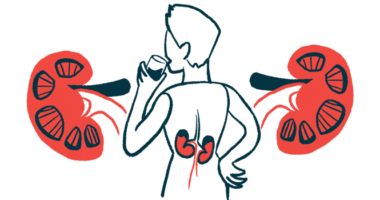Rare lupus nephritis–aHUS case improves after Soliris treatment
Case report shows recovery after aHUS diagnosis and complement inhibition

A woman with treatment-resistant lupus nephritis — the most common kidney complication of lupus — and atypical hemolytic uremic syndrome (aHUS) achieved disease remission after starting Soliris (eculizumab).
Researchers analyzing the case reported that, after the Soliris therapy, the woman’s lupus nephritis remained “in remission 2 years later with low-dose prednisolone and hydroxychloroquine without any additional immunosuppressive agents.”
The report, “Sustained remission with eculizumab in refractory lupus nephritis with atypical haemolytic uraemic syndrome,” was published in the journal BMJ Case Reports.
How lupus nephritis and aHUS can overlap and worsen kidney damage
Systemic lupus erythematosus (SLE), the most common form of lupus, occurs when the immune system produces self-reactive antibodies that attack healthy tissues and organs. When the kidneys are affected, this can cause lupus nephritis — a serious complication marked by inflammation and scarring that can lead to kidney failure.
The co-occurrence of aHUS with SLE is rare, but is linked to worse disease outcomes. aHUS is a type of thrombotic microangiopathies, a group of disorders involving red blood cell destruction, low platelet counts, and small blood clots that can injure organs, especially the kidneys. Both SLE and aHUS share an underlying mechanism: overactivation of the complement system, a part of the immune system normally involved in fighting infections.
Treatment of lupus nephritis typically involves immunosuppressive agents. However, some people do not respond to these therapies and develop what is known as refractory lupus nephritis.
Although complement activation is known to play a central role in lupus nephritis, complement inhibition is not part of routine treatment. To date, only a few studies have explored the use of Soliris, a therapy that blocks the complement protein C5, in lupus nephritis that does not respond to conventional immunosuppression.
Case details show severe symptoms and lab findings before diagnosis
Here, researchers in Australia described the case of a woman in her 30s who had progressively worsening shortness of breath, fatigue, night sweats, and joint pain for two months. In the days before she was admitted, she developed fevers and rigors due to macrophage activation syndrome — a serious complication marked by excessive activation of certain immune cells.
She was diagnosed with SLE at age 13. One previous complication, pulmonary arterial hypertension, resolved after treatment with rituximab (an immunosuppressant) at age 19. However, despite multiple immunosuppressive therapies, her lupus nephritis remained resistant to treatment.
At the time of her hospital evaluation, she was taking immunosuppressants and blood pressure medications.
Lab tests showed anemia (low level of hemoglobin, the protein that carries oxygen in red blood cells), low white cell counts, elevated inflammatory markers, and proteinuria (protein in urine, a sign of kidney damage).
Levels of the complement C3 protein were low. She also had high levels of ferritin, indicating inflammation, and lactate dehydrogenase, a marker of tissue damage.
Imaging ruled out pulmonary embolism (blood clot) and showed normal heart function. She also tested positive for COVID-19. She was ultimately diagnosed with macrophage activation syndrome based on her clinical presentation and lab findings.
She received corticosteroids, which lowered her ferritin and blood fat levels. However, her kidney function worsened, eventually requiring dialysis, a treatment that temporarily takes over the kidneys’ role by removing waste from the blood using a machine.
Soliris treatment led to sustained improvement and long-term remission
By day 23 of admission, she had developed worsening anemia, low platelet counts, a rise in lactate dehydrogenase, and fragmented red blood cells — findings that suggested aHUS.
Soliris was started two days later to treat aHUS. She received four weekly doses of 900 milligrams of Soliris, alongside mycophenolic acid, hydroxychloroquine, and steroid prednisolone. This treatment led to rapid improvements in symptoms and lab results. Kidney function improved, proteinuria resolved, and platelet counts remained normal nine months after she completed Soliris.
Two years after treatment, the patient remains in sustained lupus nephritis remission, maintained on prednisolone, hydroxychloroquine, and blood pressure medications.
Overall, this case report “suggests that complement blockade with eculizumab [Soliris] may have a role in the treatment of patients with refractory [lupus nephritis]. Additional studies are required to elucidate the role of eculizumab in the management of severe [lupus nephritis],” the researchers added.







